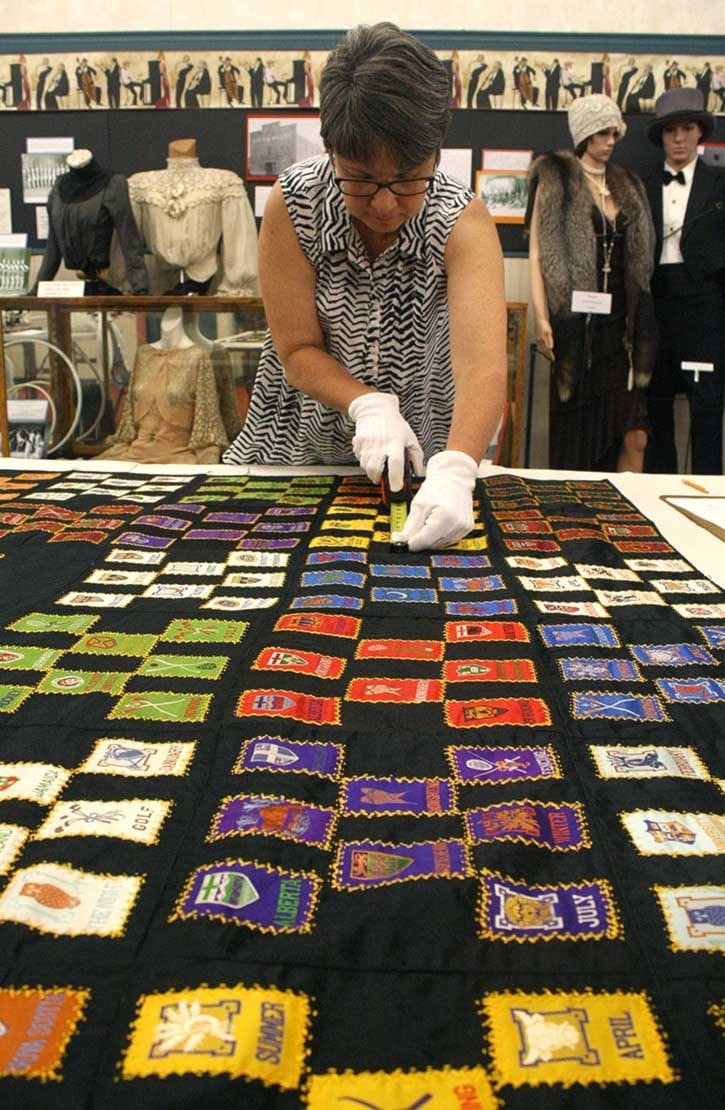Piece by piece, memory by memory, a Royal Canadian Museum assistant curator is crafting a comprehensive look at Alberta's quilters history using quilts in community museums and private collections.
On Aug. 17, Lucie Heins, assistant curator, Western Canadian History, along with local quilters Loree Schafer and Marlene Olson documented the Wetaskiwin Heritage Museum's collection of 10 quilts.
The following day Heins moved on to 13 quilts from private collections in the community, brought in by appointment.
“I always get local quilters to assist me,” said Heins. “It's not like I have a team that follows me wherever I go. So it's an opportunity to engage the quilters in a community.”
“I couldn't do this project without the help of local quilters,” she added.
Heins is in her sixth year of a research project looking at the quilts and quilters of western Canada, as she says most available literature focuses on eastern Canada. “There's no real book on its history.”
“It's the quilts in private collections that have the stories and the photographs,” she added.
Heins recalls one man brought in two of this grandmother’s quilts, which featured decorative embroidered edging, “Which I had never seen before.”
Heins noticed many of the quilts from the area brought in were crazy quilts; a specific technique often used in the late 1800s.
Another memorable quilt for Heins was one estimated to date back to the 1920s. Documenters could see the pre-marked top made with blue ink. Heins says for the markings to still be visible the quilt must not have been washed often.
The quilts with pre-marked tops were purchased as part of quilting kits, which were available as early as the late 1800s. “We don't often see quilts that was part of a kit,” said Heins.
“When we document quilts and we document the history of the quilter we're also documenting Alberta's history,” she added.
With that particular pre-marked quilt Heins says it either took the woman quite a long time to finish that style of quilt or she was a “woman of leisure” who could dedicate her time to the craft.
The story accompanying the quilt is the quilter was married to a man who believed his wife's role was in the home rather than helping on the farm, as so many other farmers' wives were expected to. “In this instance she was kind of like a woman of leisure,” said Heins.
Heins is also pleased with the number of older quilts brought in from the Wetaskiwin area. She says she usually sees many from the '50s and '60s.
Heins spent the first three years of her project researching contemporary quilters. “How quilters quilt today is in many ways different than how quilters quilted 100 years ago.”
The following five years are dedicated to community museums and private collections. “So that's where I tend to capture most of the history,” said Heins.
Heins says she will probably hold another event in Wetaskiwin to document the quilts put on a waiting list she did not have the time to get to on Aug. 18. She is aiming for October but does not yet have a set date.
